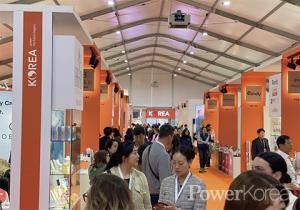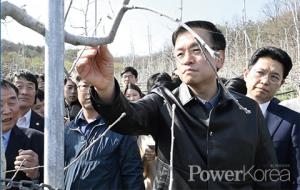 |
||
| ▲ Ye Mi-gyeong | ||
Gijang County probably is most famous for fresh seafood with sea mustards and kelps in particular. To get the freshest sea mustards and kelps of Gijang, people from downtown Busan or even Ulsan are happy to journey down to the county where the East Sea and the South Sea meet. Behind this fame was an effort of the Gijang Ascidians Breeding Center led by the director Ye Mi-gyeong.
Keeping a thousand years of flavor from the sea
Gijang sea mustards were almost extinct when the Gijang Ascidians Breeding Center was about to open three years ago. Seeing the extinction as a serious matter, experts, including professors, in the field of ascidians gathered together to establish the center under the leadership of Ye.
Ye was born in Cheongdo County, North Gyeongsang Province. It was when she got a course at Pukyong National University, Daeyeon Campus, to know better about the sea and the fisheries which eventually led her to taking the steering wheel of the center.
The center carries on R&D in ascidians, recovers the seeds of each kind and brings high value added to the industry. Also, it organizes presentations on the newly bred by inviting county officials and local fishermen on a regular basis to see its commercial feasibility and to gather their opinions.
Growing to be a global ascidians center
Gijang sea mustards are chewy and have excellent taste and flavor. The King Sejong Geography Book records that the Gijang sea mustards were one of the common royal cuisines.
Experts say that warm current and cold current collide off Gijang County so the current is swift and the county also has plenty of sunshine throughout the year; these conditions make the area an ideal spot for sea mustards to grow fresh. As a result, Gijang was designated as a sea mustard and kelp special zone.
Regarding the importance of ascidians, experts voice together that ascidians are the primary producers in the sea and the recent chlorosis in the East Sea can endanger these ascidians.
“To preserve the seeds of sea mustards and kelps more efficiently, we are working on creating an ideal sea forest that can correspond to climate changes. Sea mustards and kelps are food for normal people but it is important to know that they can also be used for medicine as well as a source of tourism so we are planning to bring up a good platform to connect these industries together” says Ye and adds;
“The staff at the Gijang Ascidians Breeding Center is working in close cooperation with the common goal to grow the center as a leading research institute of ascidians in the world. For this, we will keep carrying on R&D and listening to opinions of industry specialists and fishermen on a regular basis.”
강승연 기자 cjsqh777@naver.com






